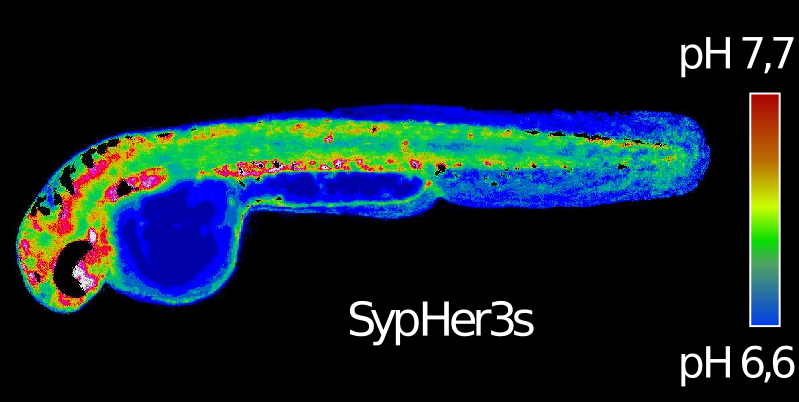Press-room / news / Science news /
Genetically encoded fluorescent pH probe for precise monitoring of cellular biochemistry
One of the directions of the Molecular Technologies Laboratory is the development of new tools for bioimaging and optogenetics. Yulia Ermakova, Vsevolod Belousov and other lab members, in an article in Chemical Communications, describe a new member of SypHer family of genetically encoded pH indicators, SypHer3s.
This “molecular pH-meter” allows the quantitative measurement of pH in living systems of various complexity. Using genetic engineering methods, SypHer3s can be delivered into a living cell and, due to its high brightness, can be used in high-resolution microscopy: for example, for accurate observations of fluctuations in acidity in cells or even whole organisms — the article describes a first measurement of pH in various tissues of the zebrafish embryo.

SypHer3s: genetically encoded pH indicator with improved brightness and dynamic range
In addition, SypHer3s helped to demonstrate the functional heterogeneity of mitochondria in different compartments of neurons. In the body of a neuron, mitochondria are inactive, while in synapses they begin to actively pump out protons from the matrix creating an electrochemical gradient necessary for the synthesis of ATP. It is convenient to monitor these processes using the pH probe directed to the mitochondria. According to Vsevolod Belousov, “it seems that different parts of the neuron get the energy in different ways: the body uses glycolysis, and synapses — oxidative phosphorylation”.
The results of the work are published in the Chemical Communications.
may 3, 2018

